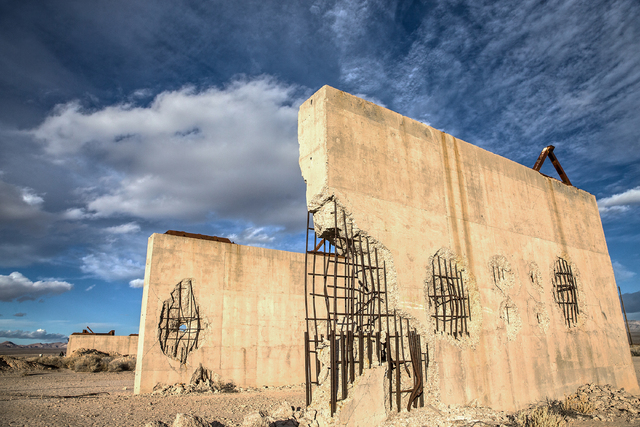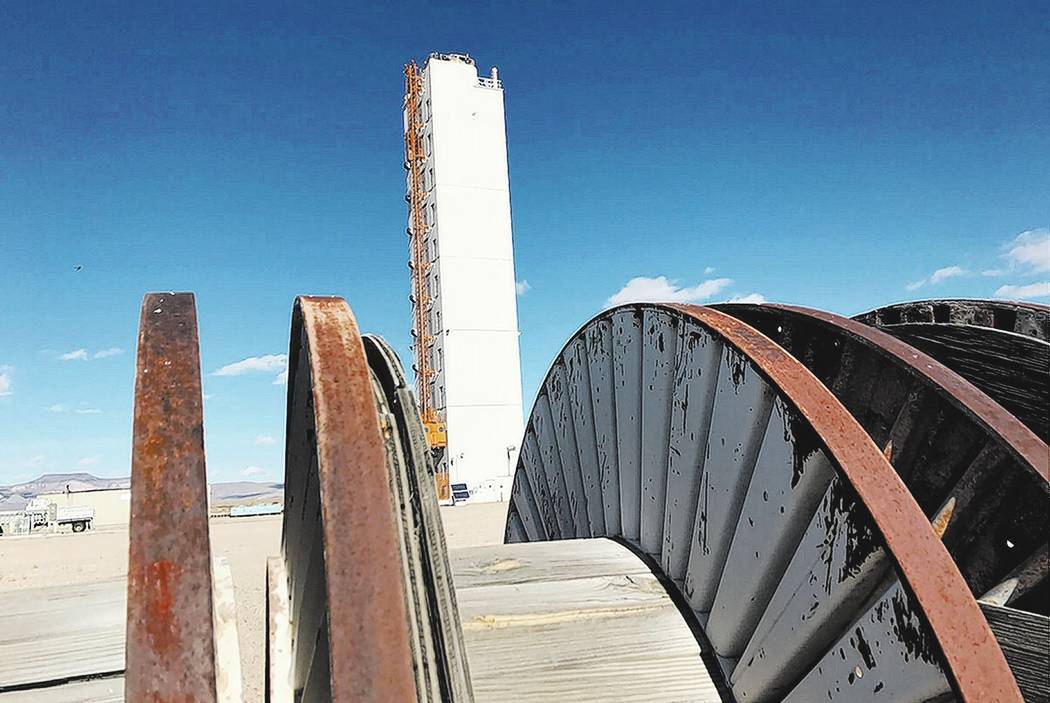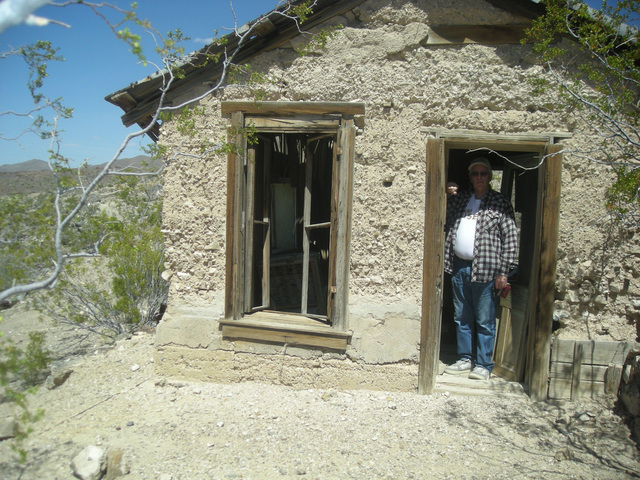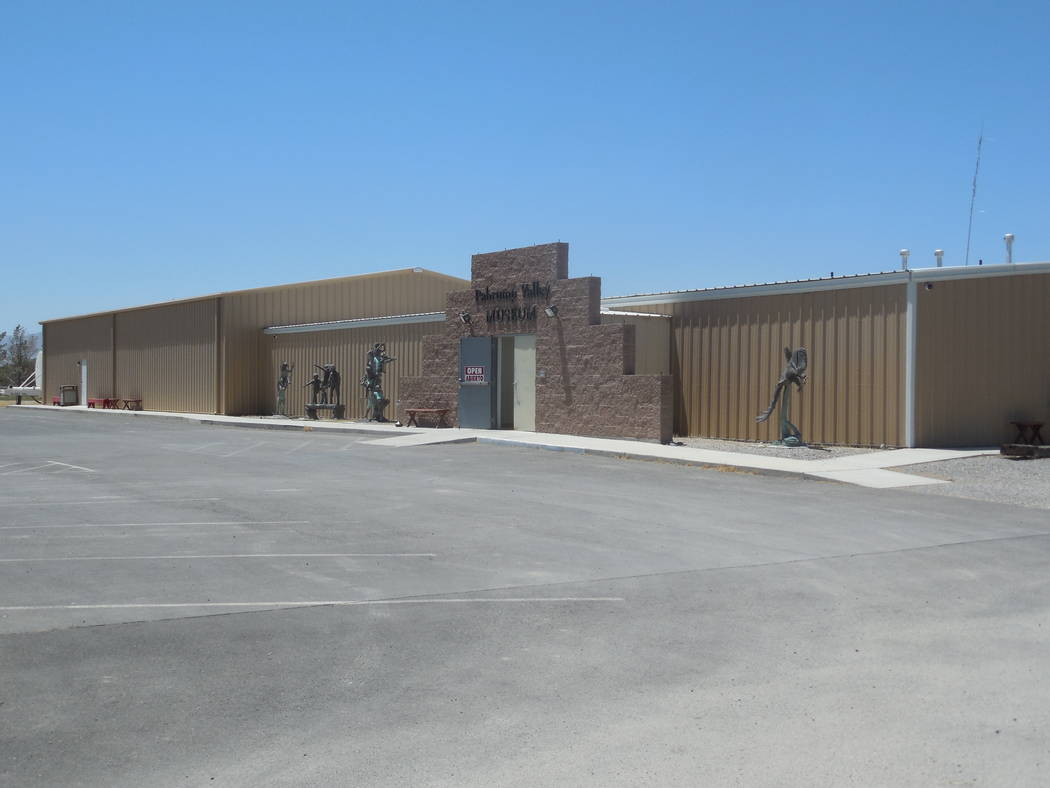Bob McCracken: Getting modern conveniences in early Pahrump
In the spring of 1988, I had the pleasure of conducting an oral history interview with Harry “Button” Ford at his home in Pahrump.
Ford, who died in 2011, had a wonderful memory. He was extremely well spoken and a storehouse of information on Pahrump area history. He had a deep love for Pahrump and its past and was co-founder of the Pahrump Valley Museum.
Harry Ford’s family was originally from Wisconsin and moved to California during the Great Depression. He was born in Los Angeles in 1937. In 1942 the family moved to the Yermo-Barstow area of Southern California.
In 1944 they heard about the water resources—both wells and springs—in the sparsely populated desert valley where the small community of Pahrump was located. They packed up and moved to Pahrump, living on and managing the Raycraft Ranch, one of a number of smaller properties in the valley.
Three Large Ranches
At that time there were three large ranches in Pahrump. The largest, consisting of 12,000 acres, was the Pahrump Ranch. It was a hay, grain, and cattle operation with 500 or 600 acres under cultivation. The Manse Ranch, the second largest in the valley, was also a hay, grain, and cattle operation but also ran cattle outside the ranch in the Charleston Mountains in the summer and in the valley in the winter.
The Manse Ranch was owned by a Dr. Cornell of San Diego and managed by his daughter Ruth and her husband, Charles Sawday. A third ranch, known as the Kellogg Ranch, was owned by Lois Kellogg, a wealthy heiress. She also owned the Arlemont Ranch in Fish Lake Valley. Following her death, the Kellogg Ranch was incorporated into the Manse Ranch.
Pahrump School
When the Fords arrived in Pahrump in 1944, valley children attended school in a small one-room schoolhouse. It was constructed of old railroad ties, had a dirt roof, and was located behind what was, in 1988, the A&A complex.
It belonged to Pop Buol, who operated a general store in Pahrump and had moved to the valley not long after the turn of the century. About 15 students were enrolled in grades one through eight. Students had to go elsewhere for grades nine through 12, often to Las Vegas.
Getting to Pahrump
Harry Ford worked for the Nye County road department for more than 30 years. He knew the roads in the Pahrump area far better than anyone else. In his interview, he stated, “Roads are the lifeline of the West.”
Las Vegas, of course, was the nearest city to Pahrump. But getting there was not easy, with little more than a trail available over Mountain Springs.
To get to Las Vegas in those days you drove north from Pahrump past Johnny, then to Highway 95 and on to Las Vegas. The trip was 100 miles and the road from Pahrump to Highway 95 was terrible. “It would just tear the car up,” Harry said. A trip to Las Vegas, which now takes about an hour and 15 minutes, took three hours one way.
After the Nevada Test Site opened in 1950, few of the workers there settled in Pahrump because the road was so bad. Most lived in Las Vegas.
The road over the Johnnie Summit from Pahrump to U.S. Highway 95 was paved in 1966. The newly paved road opened Pahrump to Test Site workers. The gate at the Nevada Test Site was 40 miles from Pahrump. The fact that there were no building codes in Pahrump at the time also helped attract test site employees and other new residents.
By the way, Harry recalled the first atomic test at the Test Site, which took place in early 1951. Its brilliant flash was seen by his brother-in-law, who was driving a tractor in the fields at the time. “It came as a complete surprise,” Harry recalled. His brother-in-law came into the house and said, “I saw this flash that you wouldn’t believe.”
In May 1951, Nevada Senator Pat McCarran announced funds would be available for construction of a new highway linking Pahrump and Las Vegas. Highway 160 over the Spring Mountains at Mountain Springs opened on Sunday, September 26, 1954. A big ribbon-cutting ceremony was held. A headline read, “Pahrump Wedded to Civilization.”
Pahrump’s future was on its way.
Propane was a lifeline
When Harry Ford married in 1958, he and his bride, Mary, moved into a house that featured a small propane-powered generator. It would handle the lights if they didn’t burn too many at the same time. It would run a swamp cooler and a washing machine, but not at the same time. They couldn’t have a deep freeze. Propane powered the refrigerator and was also used to heat the house.
Propane was their lifeline, Harry recalled. It cost 20 cents per gallon and they used 100 gallons a month. “So our utilities were $20 a month.” They used water supplied from a diesel-powered agricultural well. “Everybody in the valley did then,” he said.
Electric Power and Telephone
Electric power in Pahrump was delivered through a 120-mile transmission line and 300 miles of distribution lines. On March 16, 1963, power was turned on.
Telephone service in Pahrump began March 6, 1965, with 76 subscribers listed in the first telephone book.
The many benefits of civilization were now available, and Pahrump was well positioned for a prosperous future.
Bob McCracken has a doctorate in cultural anthropology and is the author of numerous books in the Nye County Town History Project.



















